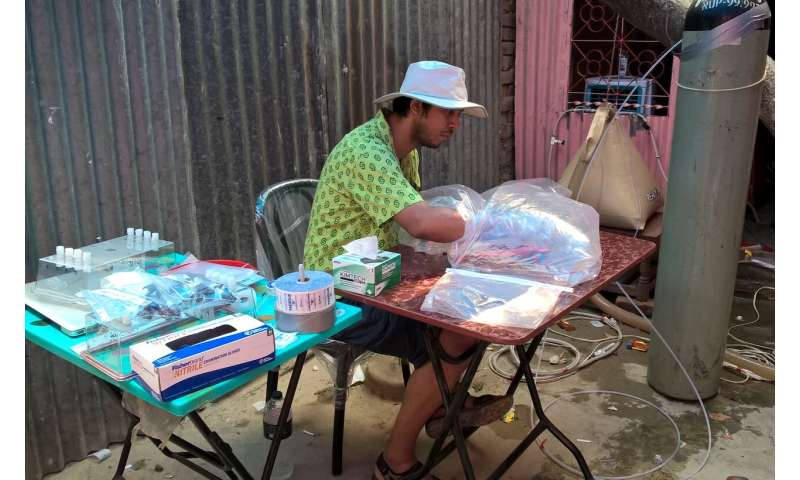The sustainability of arsenic-safe groundwater in the Bengal Delta

Worldwide, an estimated 220 million people are drinking groundwater containing the toxin arsenic (As) at concentrations above the World Health Organization guideline of 10 parts per billion. About 94% of the people at risk are in Asia. Chronic As exposure through drinking water can lead to cardiovascular disease, cancers and skin lesions in adults, and diminished intellectual and motor function in children. In many As-affected regions, reliance on low-As (safe) aquifers is the most promising way of reducing exposure. Understanding the sustainability of long-term pumping from these safe aquifers motivated this research.
High As concentrations are usually associated with shallow gray sand aquifers, and low As concentrations with orange sand aquifers. Our work published in Water Research shows, however, that As "sticks" to sand regardless of its color. This is good news for Bangladesh, where the study was conducted, because such retention means low-As aquifers will be protected to some extent against the flow of high-As water regardless of sand color.
A novel method to measure As retention
The process through which As sticks to the surface of sediment particles is called "adsorption." Most previous experiments to measure adsorption have been conducted in the laboratory, where a small amount of sediment is reacted with artificial groundwater with a known amount of As added and then measuring how much is left in the groundwater afterward. Such experiments may not be representative of actual subsurface conditions for a variety of reasons. To overcome this limitation, we used a novel hybrid form of field and laboratory experiment to measure As adsorption. We pumped high-As groundwater directly from a shallow well into freshly collected columns of orange and gray sands and measured by how much this added As was delayed in exiting the columns.

Different sands retained As similarly
To our surprise, As was adsorbed similarly and rather strongly in both gray and orange sands. Arsenic transport was delayed by a factor of 30 to 35 relative to groundwater flow in our experimental columns, which is comparable to the delay estimated in a previous field experiment over longer time-scales in the Red River Delta of Vietnam.

Sustainability of low-As aquifers
In our study site, Araihazar, Bangladesh, it takes an average of 35 years for shallow groundwater (<50 m deep) to penetrate the intermediate (>50-90 m deep) low-As aquifers. Since As is retarded by a factor of 30, as determined in the present study, the travel time of As from the shallow high-As aquifer to the low-As aquifer is estimated to be 1000 years (≈ 30 × 35). We have already shown, however, that under certain conditions, some intermediate low-As wells can become contaminated in less time. The lesson to draw is that wells should be tested every few years.
This story is part of Science X Dialog, where researchers can report findings from their published research articles. Visit this page for information about ScienceX Dialog and how to participate.
More information:
M. Rajib H. Mozumder et al. Similar retardation of arsenic in gray Holocene and orange Pleistocene sediments: Evidence from field-based column experiments in Bangladesh, Water Research (2020). DOI: 10.1016/j.watres.2020.116081
Bio:
Dr. Mozumder is an environmental engineer specializing in the geochemistry, fate, and transport of environmental contaminants. He earned his Ph.D. in groundwater geochemistry at the Lamont-Doherty Earth Observatory (LDEO) of Columbia University, New York, NY. Dr. van Geen and Dr. Bostick are LDEO Research Scientists.